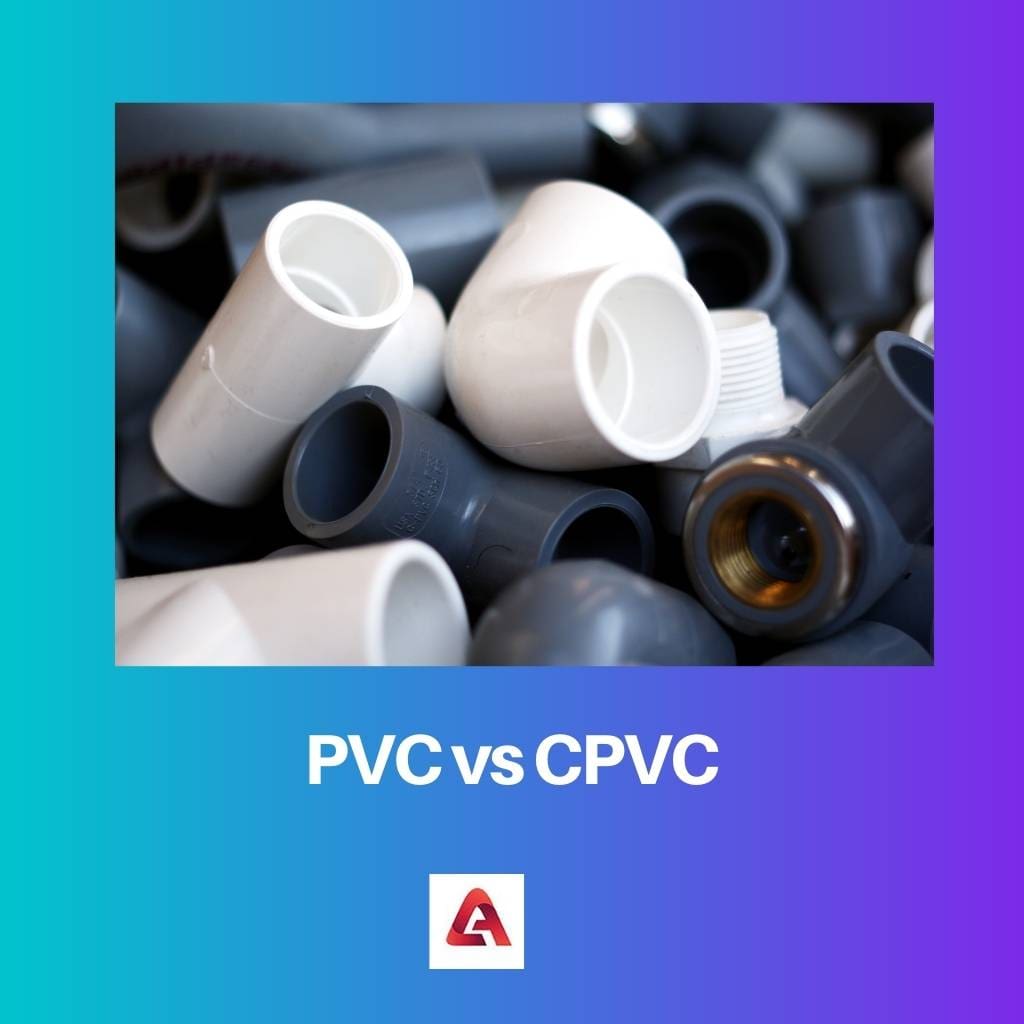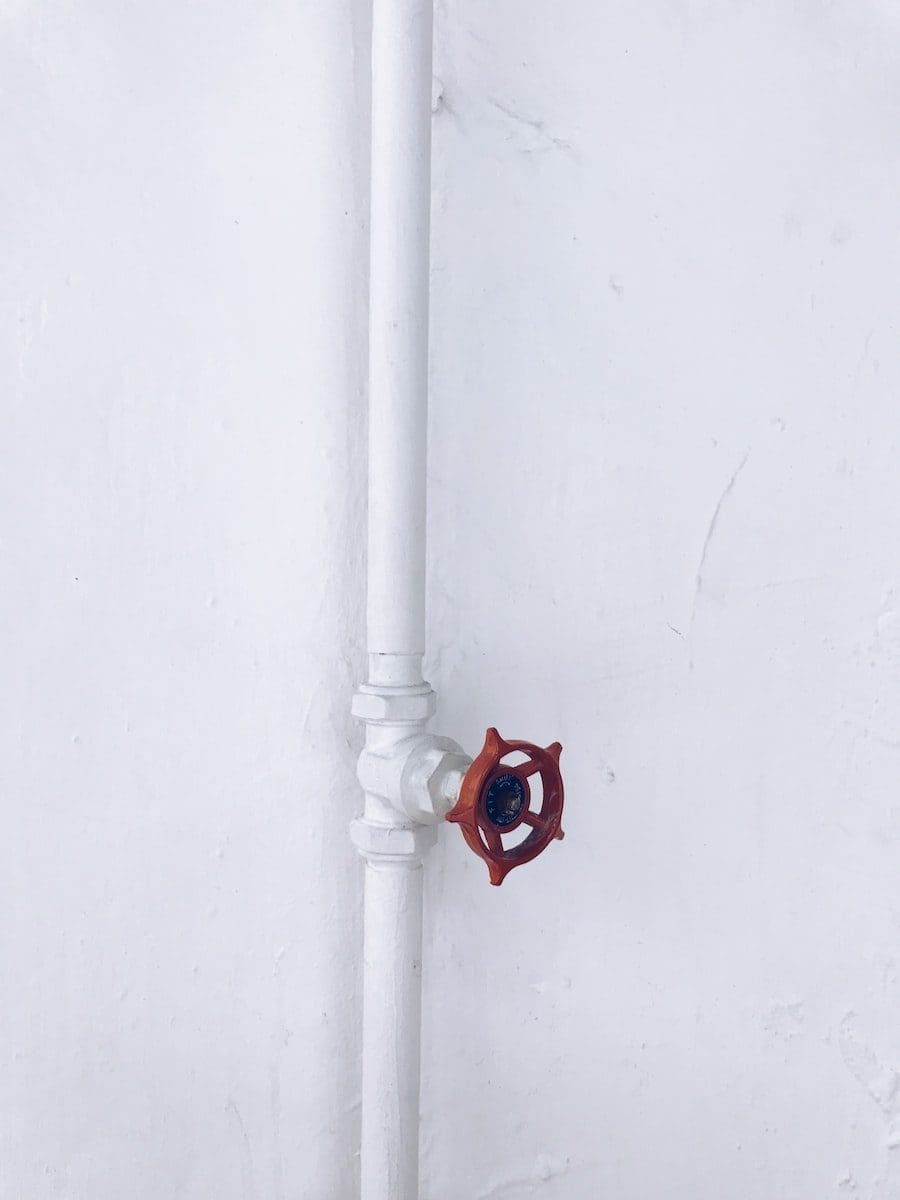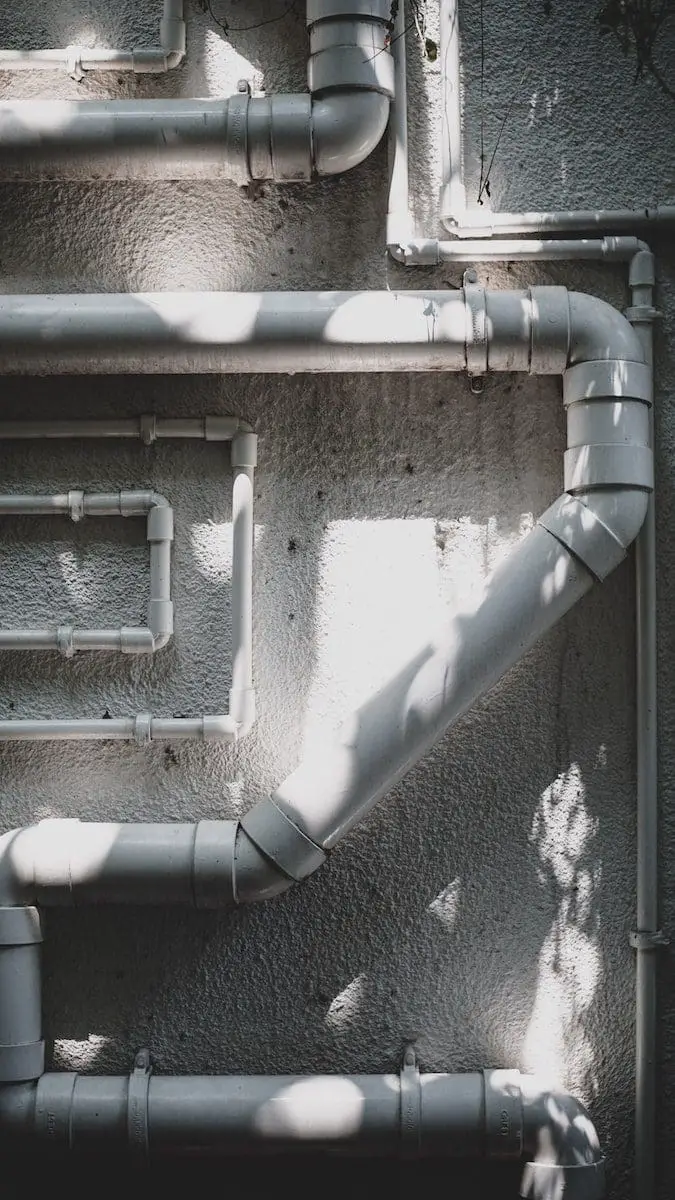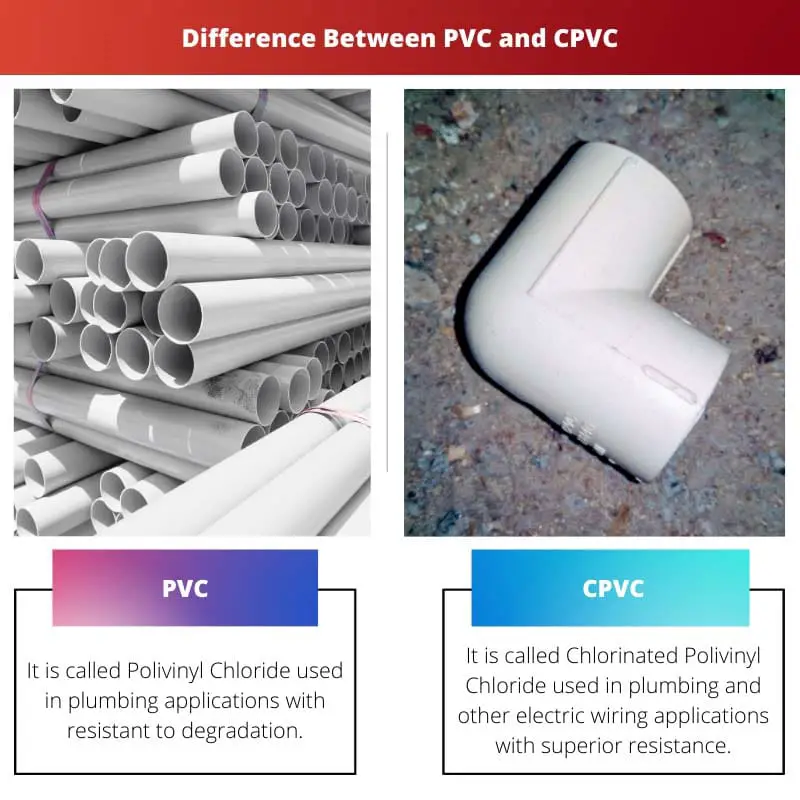The abbreviated term PVC stands for ‘Polyvinyl Chloride,’ and CPVC stands for ‘Chlorinated Polyvinyl Chloride.’ PVC and CPVC are piping and fitting materials that are commonly used for the purpose of residential and commercial plumbing applications.
They come from the same thermoplastic family. The molecular formula forms the basis for the difference between PVC and CPVC.
Key Takeaways
- PVC is suitable for cold water applications, while CPVC can handle hot and cold water.
- CPVC is more heat-resistant and can handle higher water pressures than PVC.
- PVC is less expensive than CPVC, but CPVC is more durable and has a longer lifespan.
PVC vs CPVC
The difference between PVC and CPVC is that the handling temperature of PVC is 140 Fahrenheit, and CPVC is 200 Fahrenheit. They become soft and have an increased risk of failing above the handling temperature. PVC is less expensive than CPVC, and they are cheaper when compared to copper, iron, or stainless steel pipes.

PVC is a man-made plastic that is used in plumbing works, and it helps in preventing oxidation and degradation. PVC’s chemical formula is composed of 2 carbon atoms linked together with 3 hydrogen atoms and one chlorine atom using single bonds.
It is also used in electric cable insulation.
CPVC belongs to the same family as PVC. PVC infused with Chlorination of the Polivinyl Chloride resin is called CPVC. CPVC’s chemical formula is 2 carbon atoms linked to 2 hydrogen atoms and 2 chlorine atoms using double bonds.
It has much superior resistance when compared to PVC.
Comparison Table
| Parameters of Comparison | PVC | CPVC |
|---|---|---|
| Definition | It is called Polivinyl Chloride used in plumbing applications with resistant to degradation. | It is called Chlorinated Polivinyl Chloride used in plumbing and other electric wiring applications with superior resistance. |
| Colour | PVC is white, dark grey in colour. | CPVC is light grey, off-white, yellow in colour. |
| Temperature | Temperature of PVC ranges from minimum of 33 degree Fahrenheit to maximum of 140 degree Fahrenheit. | Temperature of CPVC ranges from minimum of 33 degree Fahrenheit to maximum of 200 degree Fahrenheit. |
| Flexibility | PVC is less flexible when compared to CPVC. | CPVC is more flexible when compared to PVC |
| Size | PVC is available in nominal pipe sizes. | CPVC is available in nominal pipe sizes and copper tube sizes. |
What is PVC?
PVC is commonly used as a replacement for metal piping, as metal piping is highly prone to corrosion, oxidation, and degradation. It is one of the most widely used plastics in the world due to its low cost, durability, and easy installation.
PVC is available in plain, bell shapes and available in various other shapes too.
PVC has a lifespan of 50 years long when properly installed. A few reasons for the failure of PVC are poorly attached joints, tree root displacements causing damage to the pipes, and temperatures ranging above 140 degrees Fahrenheit.
Various other factors also lead to the failure of PVC pipes, such as heat resistance above its level.
PVC is available in 2 types or variants, and they are Schedule 40 PVC and Schedule 80 PVC. Both are the same in all aspects except in their working maximum pressure, which is 450 PSI and 630 PSI for Schedule 40 PVC and Schedule 80 PVC, respectively.
These variants are easily available at affordable costs.
PVC is commonly used for commercial, residential, and recreational applications. There are over 2 million miles of PVC pipes in service to date.
PVC can be attached using glues and cut using saws without heating or using flames. PVC is more pliable than any other pipe.

What is CPVC?
CPVC is a kind of thermoplastic modified by making chlorination to it. The chlorination of PVC is called CPVC.
This process ensures provide long lifespan and durability. It has been labeled as being safe for potable water transport.
It offers significant chemical resistance from other inorganic chemicals.
CPVC’s installation process is easy and less expensive compared to copper and iron pipes. They maintain the temperatures of both cold and hot water transported through the pipes.
They are stable and fire retardant. They are available in 2 variants as PVC pipes.
CPVC is heat resistant and can withstand up to the specified maximum and minimum temperatures. They are highly durable and available in plain shape.
CPVC is available in 2 types, Schedule 40 CPVC and Schedule 80 CPVC. Both the variants vary only in their working pressure and tensile strength, which is 8200 PSI.
CPVCs are highly used for drinking water distribution, plumbing, drainage, sprinkler system, underground wiring applications, makeshift tents, and shaded seated areas.
CPVC is available in a minimum of 10 feet to 20 feet lengths. The extra chlorination process is done to prevent degradation and increase chemical resistance and the formation of bacteria.

Main Differences Between PVC and CPVC
- CPVC is superior to PVC in terms of Chemical Resistance. CPVC can inert most of the acids, bases, as well as aliphatic hydrocarbons when compared to PVC.
- CPVC, due to the chlorination process done in it, is prone to being highly reactive with chemicals like ammonia, which doesn’t happen in the case of PVC.
- There is an adverse effect on the CPVC when the glass transition temperature rises due to chlorination, which is not in the case of PVC.
- When the temperature increases, CPVC maintains it and withstands it way better than PVC pipes. PVC, due to non-chlorination, cannot withstand certain levels of specified degrees of temperature.
- CPVC is limited to flammability and smoke production, whereas PVC are more prone towards flammability.

- https://onepetro.org/NACECORR/proceedings-abstract/CORR03/All-CORR03/NACE-03606/114469
- https://www.sciencedirect.com/science/article/pii/0033065594870055

The differences in handling temperature and flexibility between PVC and CPVC are quite significant. This makes them suitable for different applications.
Learning about the failure factors of PVC, such as exposure to high temperatures and poorly attached joints, highlights the importance of proper installation and maintenance.
The details about the chlorination process of PVC to make CPVC and its impact on chemical resistance and durability make for a very informative read.
The information about PVC and CPVC variants, such as Schedule 40 and Schedule 80, provides a deeper understanding of the different working pressures and applications for each type.
The fire retardant and stability features of CPVC, along with its availability in Schedule 40 and Schedule 80 variants, make it seem like a reliable choice for various plumbing uses.
The detailed information about the molecular formulas and chemical compositions of PVC and CPVC provides valuable insights into their properties and applications.
The comparison table is very helpful in understanding the different parameters of comparison between PVC and CPVC. It’s great to know the detailed differences.
I never knew there was such a difference between PVC and CPVC, it’s interesting to learn about the molecular formulas of both materials and their key characteristics.
It’s fascinating to see the wide range of applications for both PVC and CPVC, from commercial and residential use to drinking water distribution and drainage.
The lifespan and durability of CPVC compared to PVC are impressive. It seems that CPVC would be more suitable for long-term use in plumbing applications.